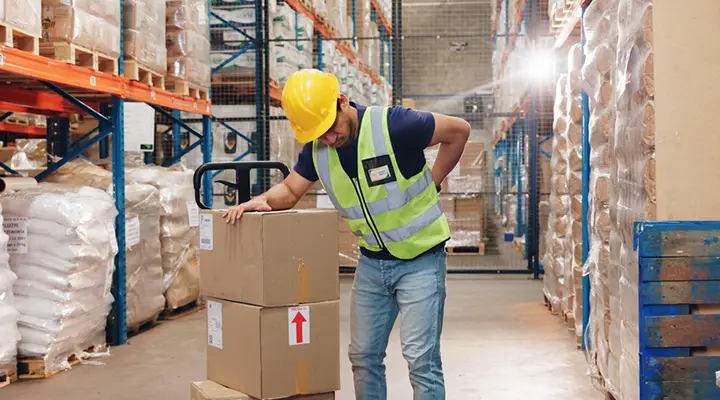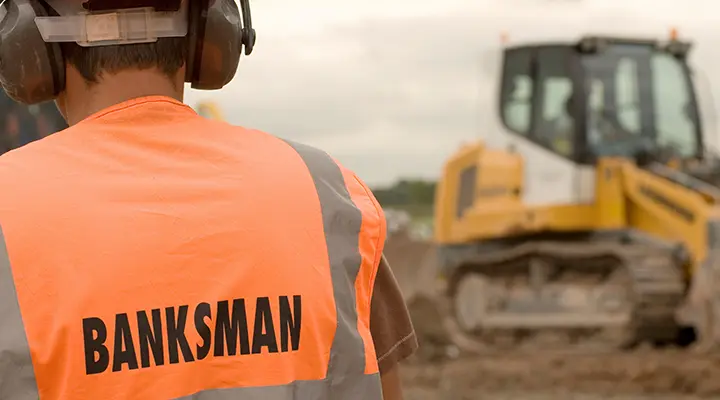Every year, workplace transport incidents result in approximately 70 fatalities and thousands of serious injuries across the UK. According to HSE statistics, these accidents frequently involve people being knocked down, run over, or crushed against fixed structures – with reversing operations accounting for the majority of these tragic incidents.
In environments where large vehicles and heavy plant equipment operate, split-second decisions can mean the difference between a safe manoeuvre and a life-changing accident. Poor visibility, engine noise, and complex worksite layouts create dangerous blind spots that can hide workers from vehicle operators’ view.
One of the most effective ways to reduce these risks is through the use of banksman hand signals.
This guide explains what a banksman is, why hand signals are crucial for workplace transport safety, and the nine essential hand signals every driver and banksman must know.
What is a banksman?
A banksman (also known as a traffic marshal or signaller) is a trained person who directs the movement of vehicles and heavy plant on worksites. To communicate effectively, banksmen use a standardised set of hand signals to provide drivers with clear, consistent guidance.
What does a banksman do?
The role of a banksman is to ensure safe vehicle and plant movement across the worksite. Their key responsibilities include:
- Help drivers and operators manoeuvre safely
- Prevent collisions and injuries
- Protect pedestrians and site workers
- Avoid damage to structures, equipment, or vehicles
What does a banksman do during vehicle operations?
During vehicle operations, a banksman acts as the eyes and ears for drivers and plant operators, especially when visibility is limited or restricted. To begin with, they position themselves where they can clearly see both the vehicle and the surrounding area, while also maintaining constant visual contact with the driver. The banksman guides the vehicle through tight spaces, around obstacles, and into position using standardised hand signals. They continuously monitor the environment for hazards, pedestrians, and other vehicles, always ensuring safe clearance. If any danger is identified, the banksman signals the driver to stop immediately, preventing potential incidents before they occur.
What are the risks associated with moving vehicles?
Moving vehicles on worksites present a range of serious risks that require careful management. These include:
- Collisions between vehicles and pedestrians, which can result in serious injury or fatality
- Vehicle-to-vehicle impacts, particularly in confined spaces or busy work areas
- Restricted visibility for drivers, especially when reversing or manoeuvring large plant machinery
- Crushing incidents between vehicles and fixed structures or equipment
- Overturning or instability on uneven ground or slopes
- Blind spots that prevent drivers from seeing people or obstacles in their path
- Noise levels that may prevent workers from hearing approaching vehicles
These risks are significantly reduced by trained banksmen who provide essential guidance and communication during vehicle movements.
Why are banksman hand signals important?
Banksman hand signals are crucial for workplace safety for several reasons:
They provide guidance when drivers’ visibility is limited
Being struck by moving vehicles is one of the leading causes of workplace fatalities. In 2024/25, 14 people in the UK lost their lives after being hit by a moving vehicle at work. These accidents happen because drivers have large blind spots, which make it difficult to see pedestrians, obstacles or other hazards around them.
Drivers often have restricted visibility and without proper guidance, even routine manoeuvres can become dangerous. Trained banksmen support drivers by spotting hazards and guiding vehicle movements accordingly. They use hand signals to help drivers understand exactly what actions to take. This significantly increases overall awareness and reduces the risk of collisions.
They prevent miscommunication
Hand signals provide a consistent and recognisable way to communicate vehicle movements. In high-risk environments, vague or improvised gestures can be misunderstood and lead to confusion and accidents. That’s why the UK and many other European countries use a set of standardised banksman hand signals, defined in the Health and Safety (Safety Signs and Signals) Regulations 1996. These signals ensure that everyone on site, regardless of background or experience, understands the same visual instructions. Consistency ensures that everyone on site understands instructions correctly and can respond to them accurately and safely.
They cut through noise and distractions
Workplaces, such as construction sites and industrial environments, are typically noisy and chaotic. Noise from machinery, engines, and other activities makes verbal communication difficult or impossible. Radios can fail or be misheard. Hand signals provide an immediate visual communication method that remains effective regardless of background noise. The hand signals are visible and instantly recognisable, which allows banksmen to communicate instructions clearly, even in challenging conditions.
They support legal compliance
Hand signals are not only a practical safety tool but also a legal requirement in certain situations. Under the Health and Safety (Safety Signs and Signals) Regulations 1996, employers must provide safety signs and signals where risks remain after other controls have been implemented. In vehicle operations, this means that when mirrors, cameras, or barriers cannot fully eliminate the risk, banksman hand signals should be used to further reduce remaining risks.
These signals also help employers meet their duties under the Health and Safety at Work etc. Act 1974, which requires them to take all reasonably practicable steps to protect workers and others affected by workplace activities. By using trained banksmen and standardised hand signals, employers can demonstrate they are taking reasonably practicable steps to protect workers.
Additionally, the Management of Health and Safety at Work Regulations 1999 require employers to carry out suitable and sufficient risk assessments and put effective control measures in place. Hand signals are one of the controls used when vehicle movement risks cannot be eliminated.
The 9 standard banksman hand signals
Below are nine commonly-used banksman hand signals. While these hand signals are widely recognised, some sites may use slight variations. Both the banksman and the driver must agree on, and understand, hand signals before any vehicle movement begins.
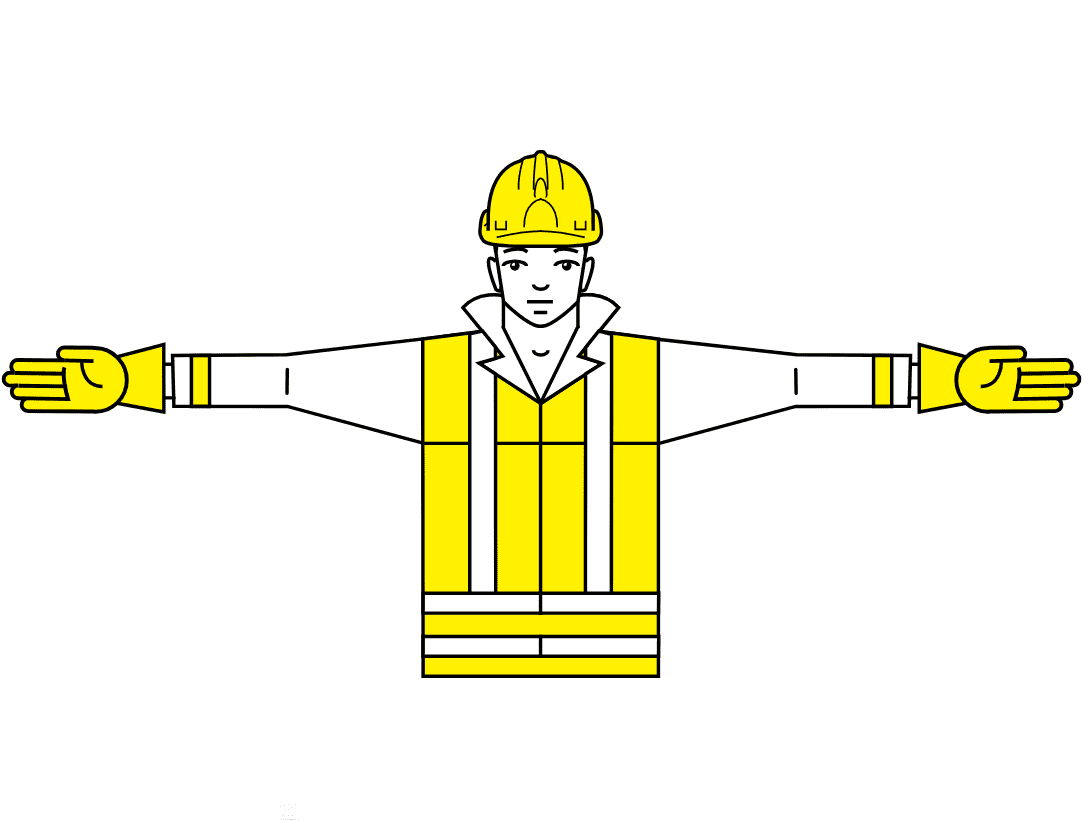
Start
The start signal is used to get the driver’s attention and make them aware that the movement is about to begin.
To show the signal, extend both arms horizontally with palms facing forward.
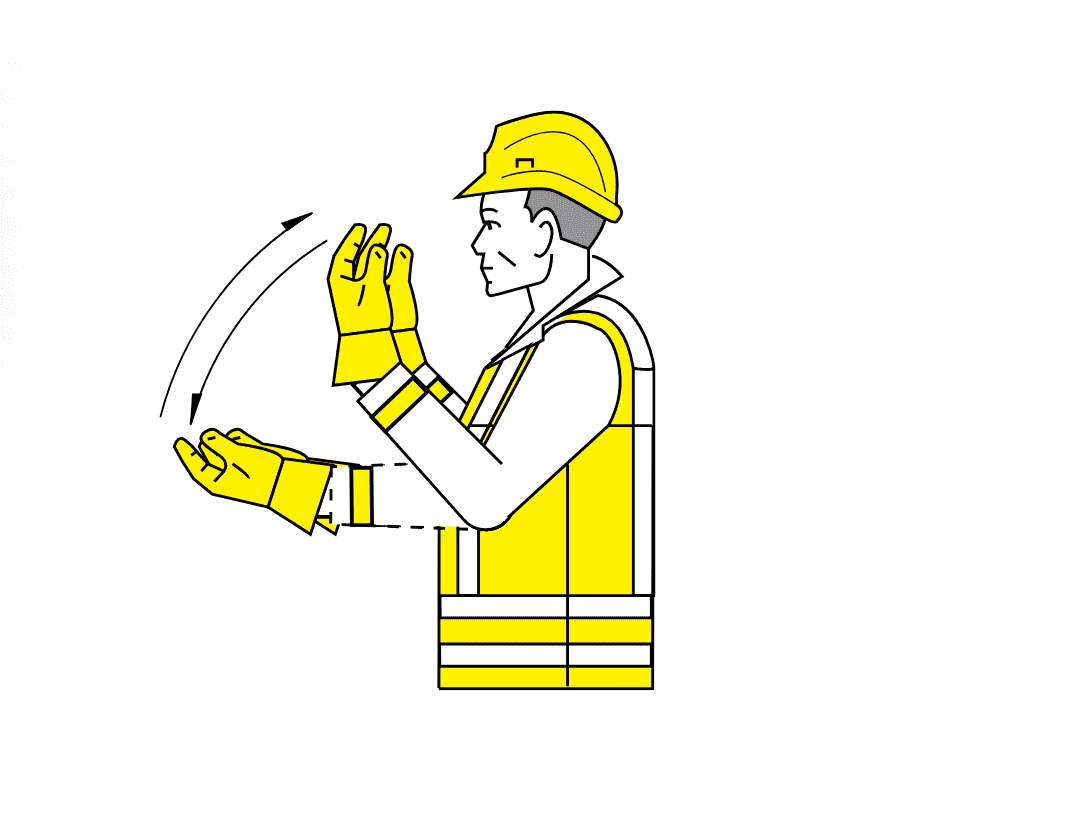
Move Forwards
The move forwards signal instructs the driver to put the vehicle in forward gear and move the vehicle forward.
To give the signal, bend both arms at the elbows with palms facing towards you. Then, make slow, repeated
movements bringing your forearms inwards towards your chest.
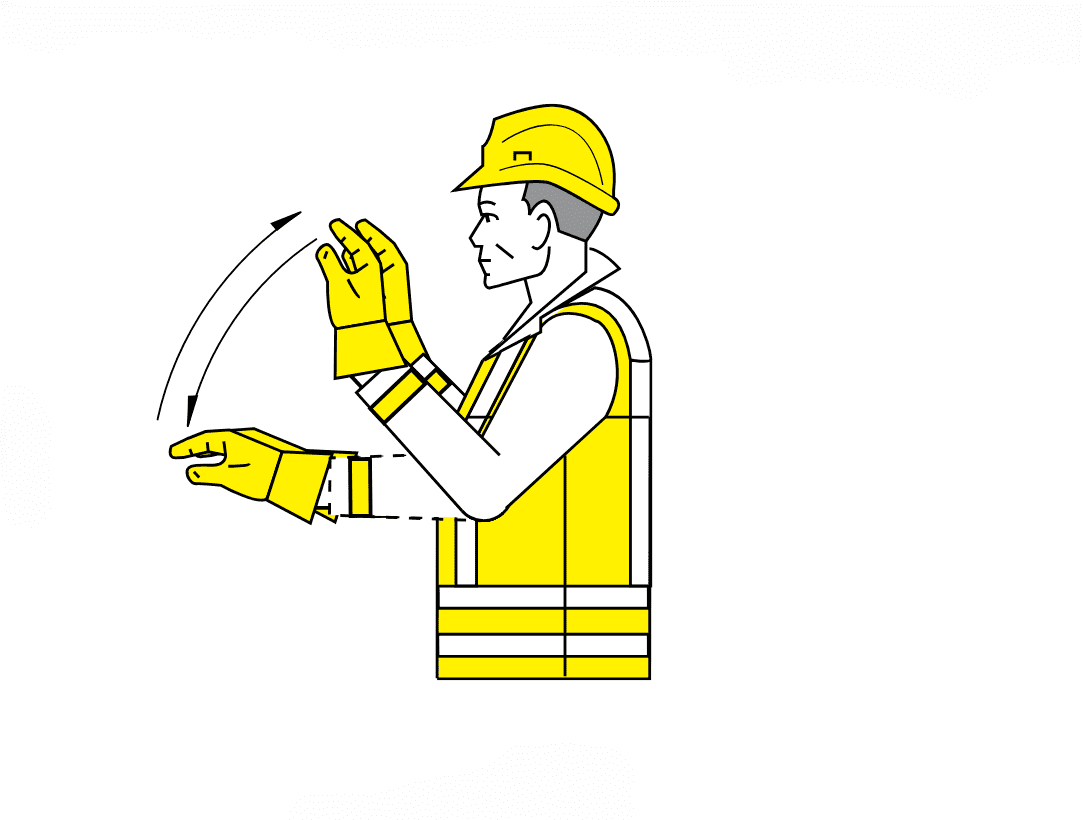
Move Backwards
The move backwards signal tells the driver to put the vehicle in reverse gear and move backwards.
To show the signal, bend both arms at the elbows with palms facing downwards, then make slow, repeated movements pushing your forearms away from your body.
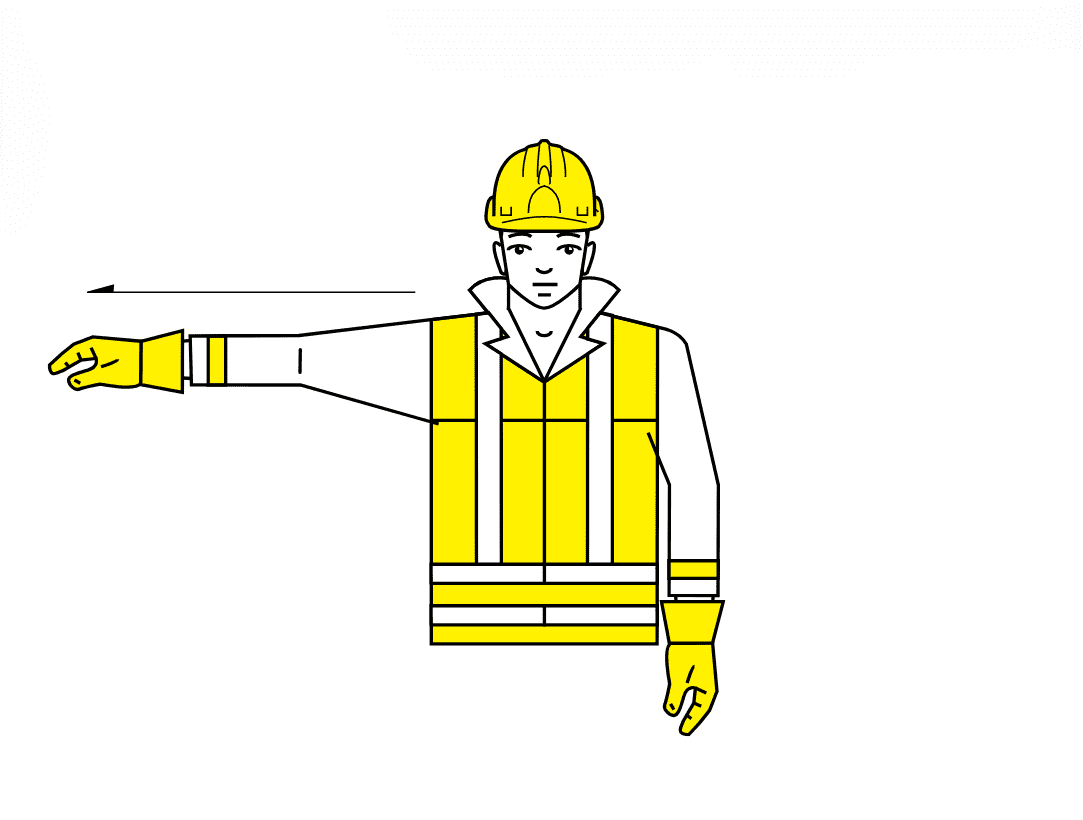
Move to the banksman’s right
The move to the banksman’s right signal tells the driver to move the vehicle to the banksman’s right.
To give the signal, extend your right arm horizontally at shoulder height with your palm facing down. Then, bend your elbow and bring your hand in towards your chest, and then extend it back out. Repeat this movement.

Move to the banksman’s left
The move to the banksman’s left signal tells the driver to move the vehicle to the banksman’s left.
To show the signal, extend your left arm horizontally at shoulder height with your palm facing down. Then, bend your elbow and bring your hand in towards your chest, and then extend it back out. Repeat this movement.
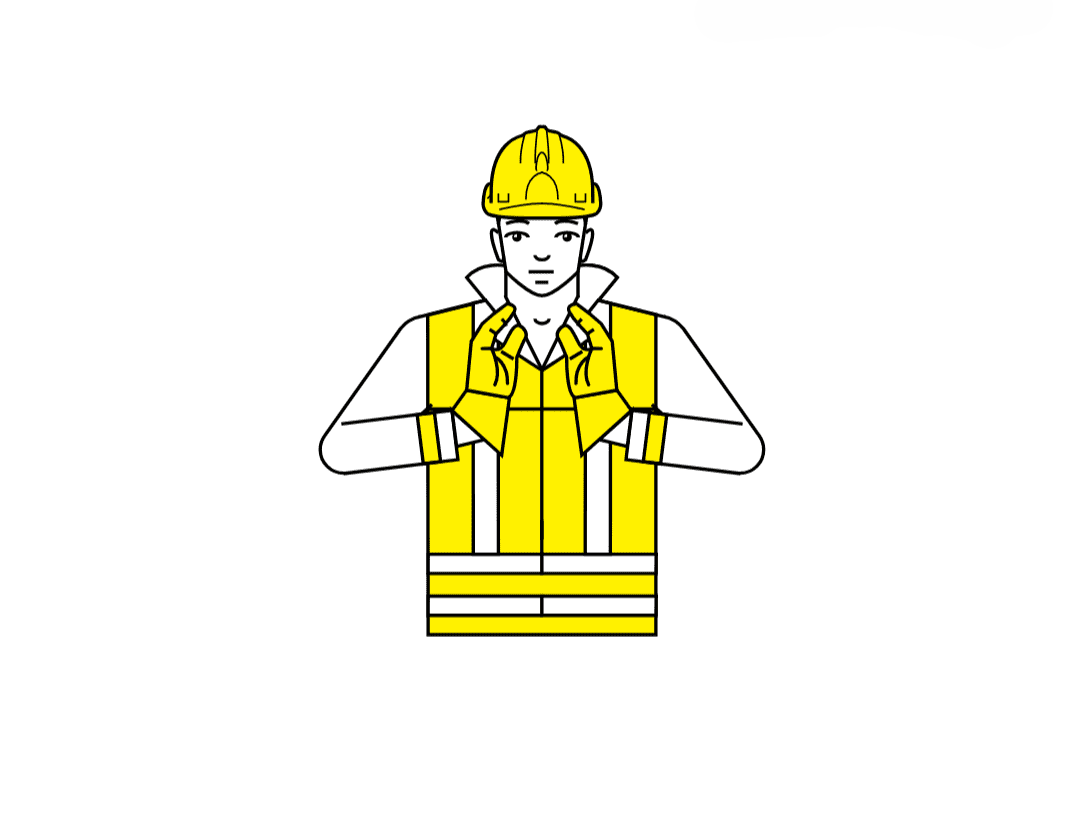
Horizontal distance
The horizontal distance signal shows the driver how far they need to move the vehicle or how much space remains.
To show the signal, hold both hands in front of your body with palms facing each other, separated to show the required distance. Move your palms closer together to show a smaller distance, or further apart to show a larger distance.
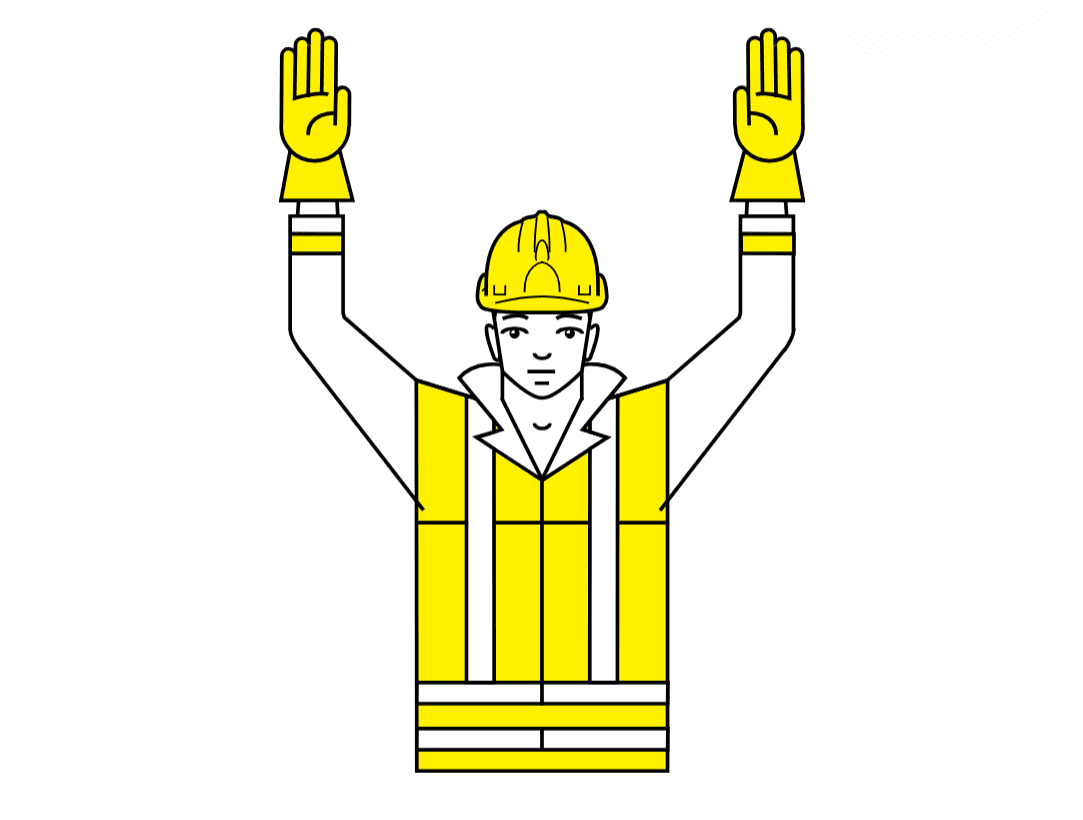
Danger
The danger signal is used to indicate an immediate safety risk. The driver must stop immediately.
To show the signal, raise both arms above your head with palms facing forward.

Stop
The stop signal tells the driver to stop the vehicle. Unlike the danger signal, this doesn’t require the driver to do an emergency stop, but rather they can come to a gradual stop.
To show the signal, raise your right hand above your head with your palm facing forward.

End
The end signal tells the driver that the manoeuvre is complete.
To show the signal, clasp both hands together in front of your chest.
How does training improve communication and safety?
Hand signals only work when everyone understands and applies them consistently. Proper training ensures banksmen and drivers use the same visual language, reducing confusion and supporting safer, smoother operations.
NEW Online Banksman Training course
Our Banksman Training course is designed to give workers the confidence and skills to:
- Safely guide vehicle and plant movements
- Spot hazards and blind spots before accidents happen
- Communicate clearly using standardised HSE-approved hand signals
- Support compliance with UK health and safety legislation
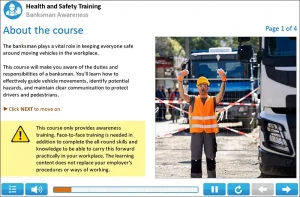
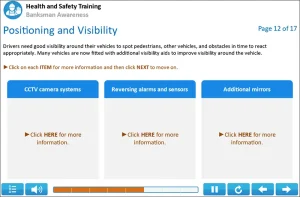
Purchase your Banksman training today only £17.50 per person, protect your workforce, and keep your site compliant.

